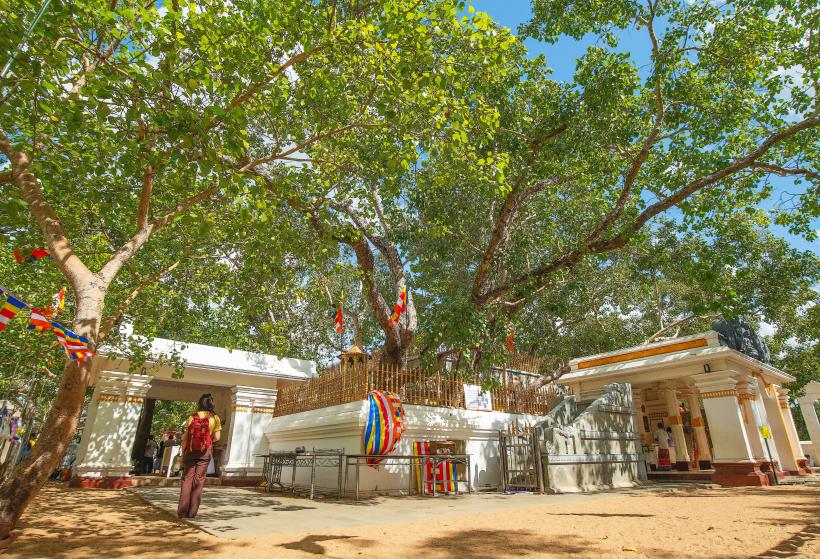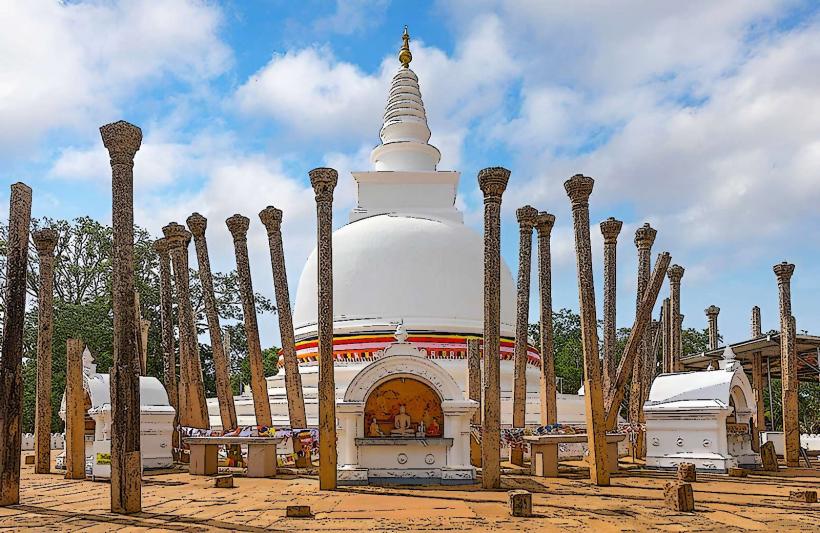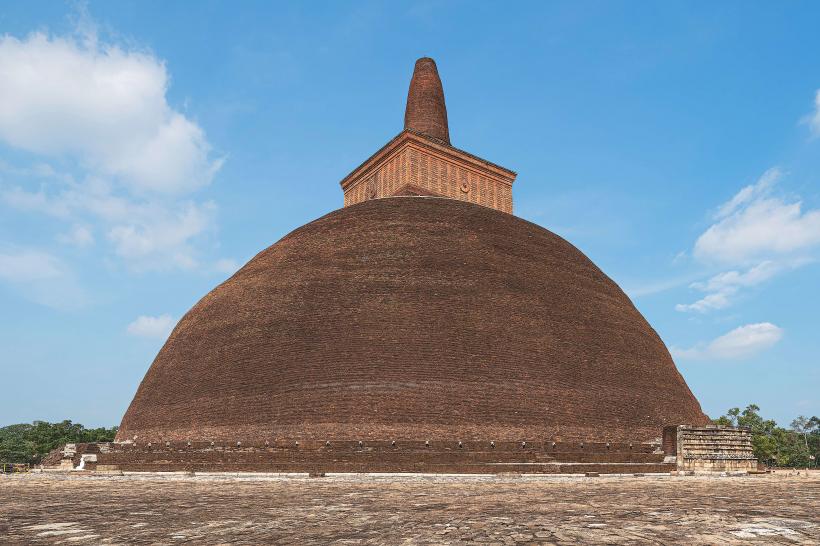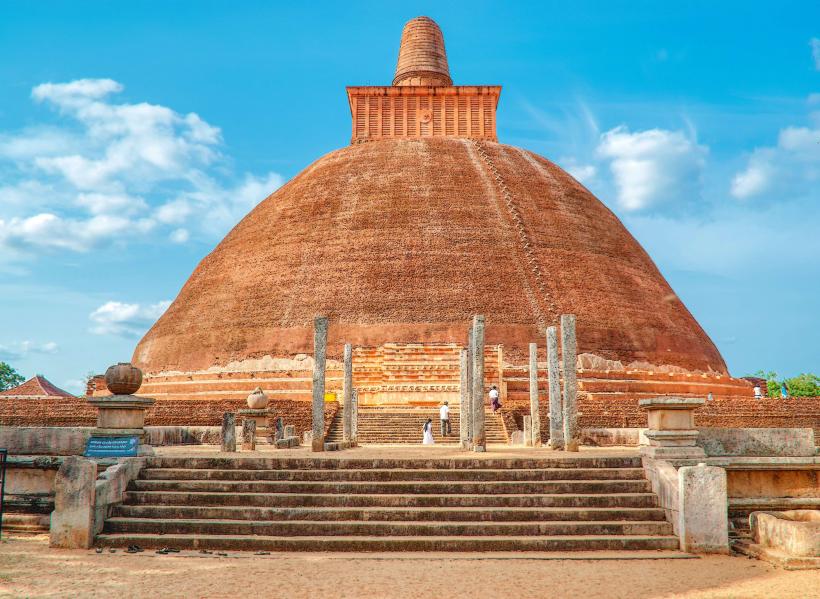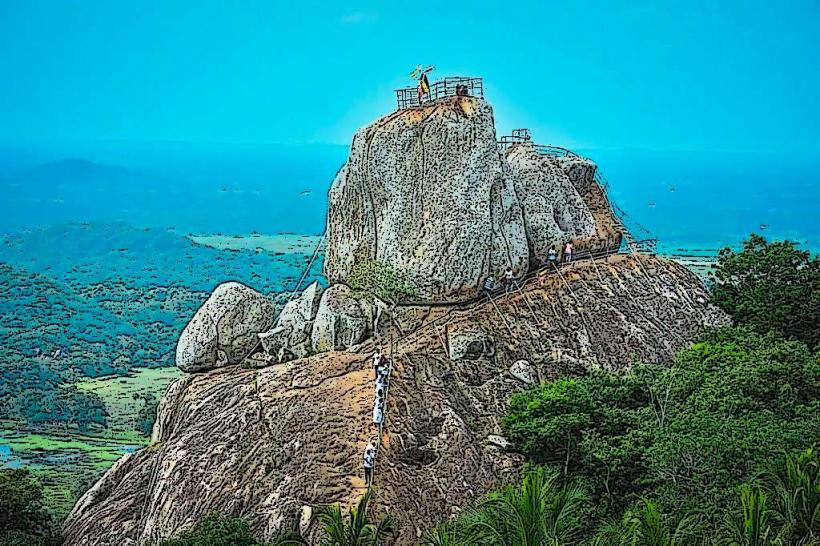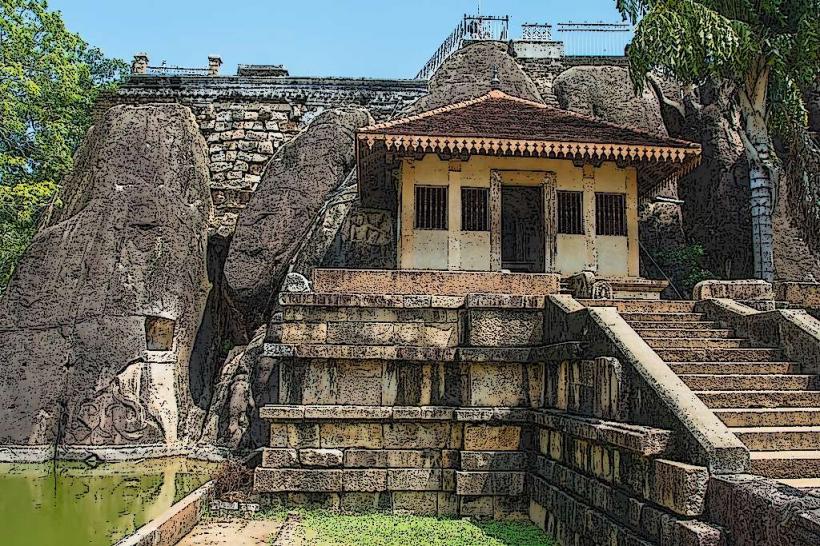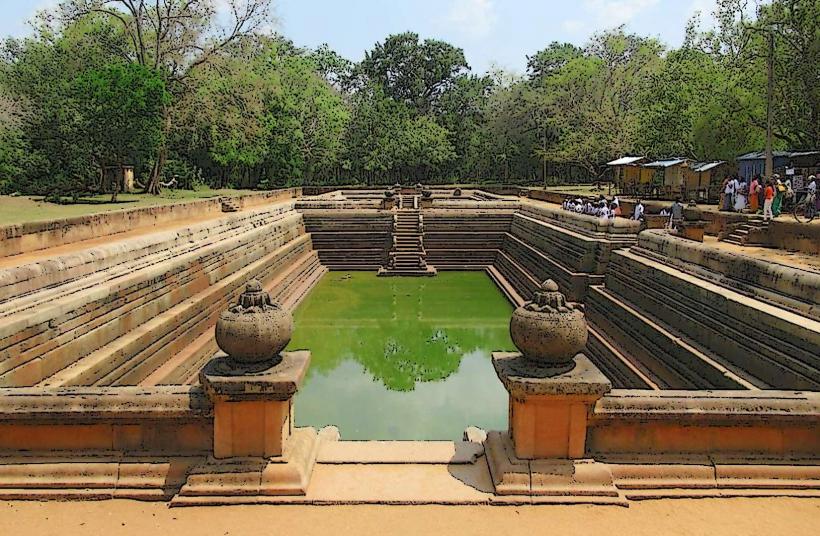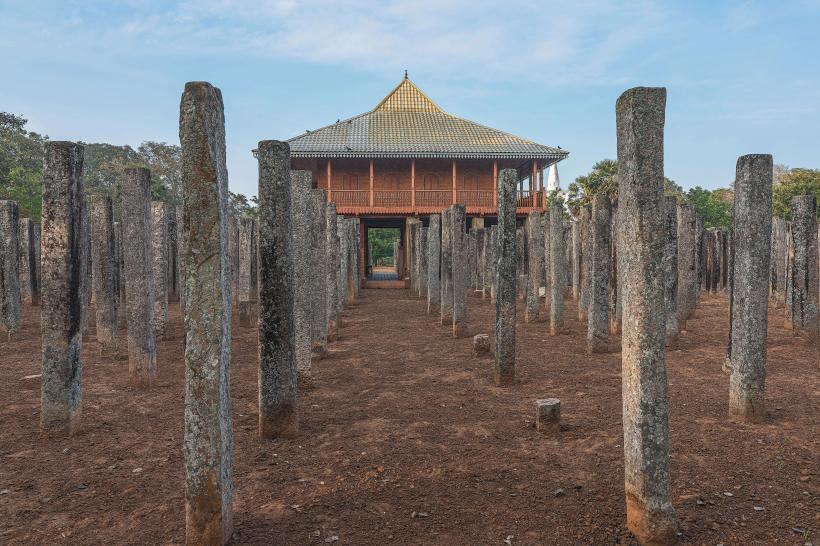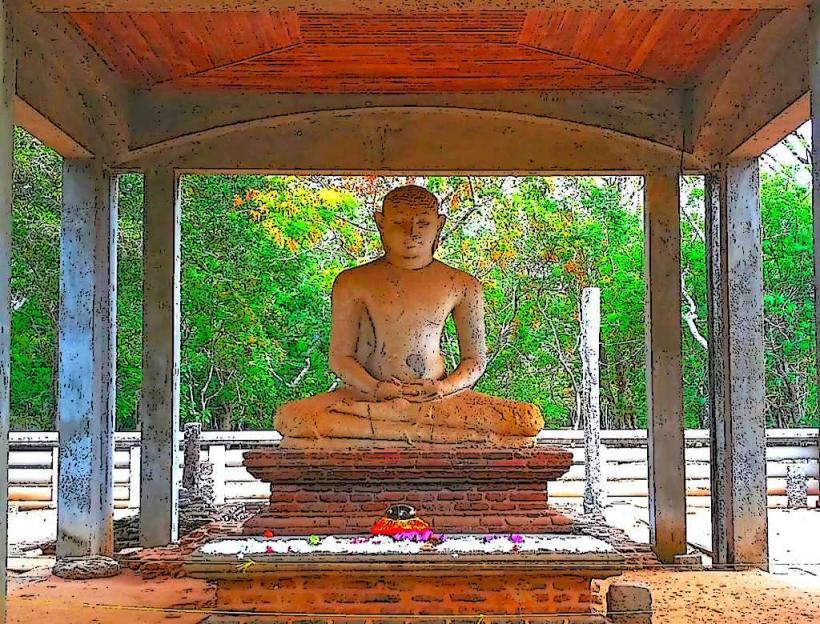Information
Landmark: Ruwanwelisaya StupaCity: Anuradhapura
Country: Sri Lanka
Continent: Asia
Ruwanwelisaya Stupa, Anuradhapura
The Ruwanwelisaya Stupa is one of the most significant and iconic Buddhist stupas in Sri Lanka. Located in the Anuradhapura District, the stupa is not only a symbol of the ancient city’s grandeur but also a revered religious site for Buddhists worldwide. It stands as a testament to Sri Lanka’s rich Buddhist heritage and remains one of the country’s most important pilgrimage destinations.
Overview
- Name: Ruwanwelisaya Stupa
- Location: Anuradhapura, North Central Province, Sri Lanka
- Type: Stupa (Buddhist monument)
- Religious Significance: The stupa houses sacred relics of the Buddha and is a center of veneration for Buddhists.
- Period of Construction: 2nd century BCE
- Height: Approximately 55 meters (180 feet)
Historical and Religious Significance
Construction by King Dutugemunu:
- The Ruwanwelisaya Stupa was constructed by King Dutugemunu in the 2nd century BCE. The king is known for his unification of Sri Lanka and his role in spreading Buddhism. The stupa was built to enshrine relics of the Buddha and serve as a symbol of the king's devotion to Buddhism.
- It is believed that the stupa was constructed to commemorate King Dutugemunu’s victory over his brother, Elara, and the unification of Sri Lanka. It also symbolizes the king’s desire to create a central religious monument for his people.
Sacred Relics:
- The Ruwanwelisaya Stupa is believed to enshrine several sacred relics of the Buddha, including portions of his body relics, which were brought to Sri Lanka from India. The stupa’s purpose is to protect these relics and provide a place for devotees to offer their respects.
Symbol of Buddhist Unity:
- The stupa represents the unity of the Sri Lankan people under the rule of King Dutugemunu and the broader Buddhist community. It is a symbol of peace, spiritual devotion, and unity.
Architectural Features
Dome Shape:
- The Ruwanwelisaya Stupa is a massive dome-shaped structure, one of the largest and most impressive of its kind in Sri Lanka. Its smooth, white dome rises to a height of approximately 55 meters (180 feet), and it is surrounded by a circular courtyard.
Architectural Style:
- The stupa follows the typical Sri Lankan stupa architectural style, with a hemispherical dome and a golden spire (called Jatika), which signifies the sanctity and holiness of the structure.
- The stupa's shape represents the Buddha’s teachings, with its roundness symbolizing the cycle of birth, death, and rebirth (Samsara).
Base and Platforms:
- The stupa is set on a large stone platform, surrounded by several smaller platforms. The structure is encircled by colonnaded walls with decorative pillars, which provide a space for meditation and prayer.
Decorations and Carvings:
- The stupa is decorated with intricate carvings of Buddhist symbols, lotus motifs, and inscriptions. These decorative elements add to the overall beauty of the stupa, making it not just a place of worship but also a masterpiece of ancient art and architecture.
Cultural and Religious Importance
Pilgrimage Destination:
- The Ruwanwelisaya Stupa is one of the most sacred pilgrimage sites in Sri Lanka. It attracts thousands of Buddhist pilgrims each year who come to worship, meditate, and offer prayers. It is considered one of the three most sacred stupas in Sri Lanka, along with the Sri Maha Bodhi Tree and the Jetavanaramaya Stupa.
Full Moon Ceremonies:
- The stupa is a focal point for religious observances, especially during Poya days (full moon days). On these days, Buddhists gather to conduct religious ceremonies, chanting, and prayers.
Buddhist Art and Culture:
- The stupa is also a significant representation of Sri Lankan Buddhist culture and art. Visitors can explore the stupa’s intricate carvings, paintings, and sculptures, which depict scenes from the Buddha's life, Jataka tales (stories of the Buddha’s previous lives), and other religious themes.
Renovations and Preservation
- Restoration Work:
- Over the centuries, the stupa has undergone several phases of renovation and restoration, especially after it was damaged by foreign invasions and natural disasters. Notably, King Valagamba (1st century BCE) is credited with the major restoration of the stupa after it fell into disrepair following invasions.
- Modern Preservation Efforts:
- Today, the Ruwanwelisaya Stupa is carefully preserved by the Sri Lankan government and Buddhist institutions to protect it from further damage. Efforts are also made to maintain its religious significance and ensure that it remains an active place of worship.
Visitor Experience
Access and Entrance:
- The stupa is located in the Sacred City of Anuradhapura, a UNESCO World Heritage site. It is easily accessible from the Anuradhapura town center. The site is well-maintained and open to visitors throughout the day, though it is especially busy during Poya days.
Religious Etiquette:
- Visitors to the Ruwanwelisaya Stupa are encouraged to dress modestly, remove their shoes before entering the sacred area, and walk clockwise around the stupa in respect to the Buddha’s teachings. Photography is generally allowed, but visitors are asked to be respectful and mindful of the sacredness of the site.
Spiritual and Cultural Programs:
- Visitors to the site can participate in meditation sessions, attend Buddhist sermons, and explore the surrounding temples, shrines, and monuments, including the nearby Sri Maha Bodhi Tree and the Thuparamaya Stupa.
Nearby Attractions
Sri Maha Bodhi Tree (Approx. 1 km):
- The Sri Maha Bodhi Tree is one of the most sacred Buddhist sites in Sri Lanka. It is believed to be a sapling from the original Bodhi Tree under which Lord Buddha attained enlightenment. The tree is an important pilgrimage site and an integral part of the Anuradhapura Sacred City.
Thuparamaya Stupa (Approx. 1 km):
- The Thuparamaya Stupa is the oldest stupa in Sri Lanka, built in the 3rd century BCE. It is believed to house a relic of the Buddha, and like the Ruwanwelisaya, it plays an important role in Sri Lanka’s Buddhist heritage.
Jetavanaramaya Stupa (Approx. 2 km):
- The Jetavanaramaya Stupa is one of the tallest stupas in Sri Lanka, standing at over 70 meters. It is an important religious site and features remarkable ancient architecture and sculptural details.
Conclusion
The Ruwanwelisaya Stupa is an iconic and sacred monument in Sri Lanka, representing the country’s deep connection to Buddhist spirituality and history. Built by King Dutugemunu, it has remained an active center of worship and pilgrimage for over two millennia. Whether for its architectural magnificence, historical importance, or religious significance, the Ruwanwelisaya Stupa continues to be a profound symbol of Sri Lanka’s Buddhist heritage and attracts millions of devotees and visitors from around the world.

